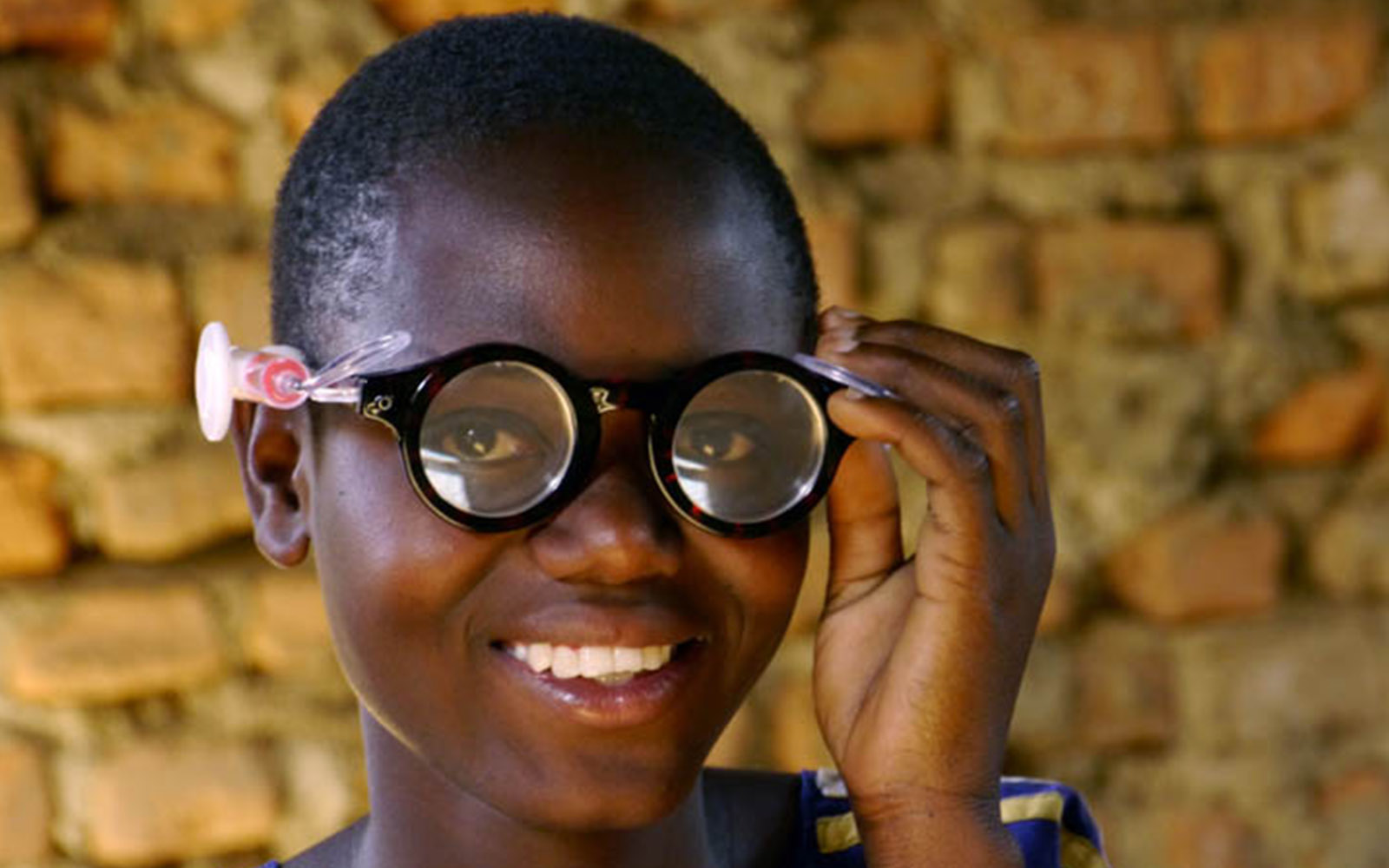 |
| Kids using the glasses had a tendency to over-minus their correction but still managed to achieve significant improvement in VA. Photo: Engineering for Change. |
Developed nations have easy access to eyecare services available to most (but certainly not all) of their citizens. In the developing world, however, something as simple as refractive error imposes a considerable burden on a wide swath of the population, owing to the dearth of eyecare providers and spectacle correction options. A potential solution are adjustable-focus glasses called Adspecs that use a fluid reservoir suspended between two membranes; the wearer rotates the front surface to adjust the volume and shape of the fluid to offset their refractive error.
A new study published in JAMA Ophthalmology tested the abilities of younger kids (age five to 11) in “self-refraction” using the glasses. Researchers assessed refractive accuracy, corrected visual acuity and factors associated with not achieving VA of 20/25 or better compared with noncycloplegic autorefraction and cycloplegic refraction.
A total of 127 children were enrolled. Self-refraction resulted in more myopic power compared with cycloplegic refraction, but there was no difference in the proportion of children with corrected visual acuity of 20/25 or better between self-refraction and cycloplegic refraction.
“Results suggest that self-refraction using adjustable-focus spectacles in children may result in over-minusing compared with cycloplegic refraction, but still may achieve good vision and help address uncorrected refractive error in under-resourced areas,” the authors concluded in the study. Failure to attain corrected VA of 20/25 or better by self-refraction in children aged five to 11 years was associated with higher astigmatic power and younger age, the authors noted.
Consistent with previous self-refraction studies, the authors found a tendency toward greater myopic power—although no definitive difference—with self-refraction compared with cycloplegic refraction among children in the same age group, likely due to noncycloplegic accommodation.
“We found a negative association between the refractive power of the cycloplegic refraction and the mean difference in refractive power between self-refraction and cycloplegic refraction that suggests a tendency to over-minus with decreasing myopia/increasing hyperopia,” the authors noted.
There was no difference between mean refractive power with the first or second self-refraction, suggesting that children might be able to achieve adequate vision correction with only one self-refraction. “As we found that the refractive power obtained through self-refraction using adjustable focus spectacles was noninferior to that of noncycloplegic autorefraction, the use of adjustable-focus spectacles would be more cost-effective than an autorefractor,” the researchers explained in the study. “In addition, children would be given the spectacles to use at the conclusion of self-refraction vs. waiting for custom-made spectacles after noncycloplegic autorefraction.”
The authors suggest offering adjustable-focus spectacles in schools where trained practitioners and/or teachers can instruct and monitor children, as it’s been proven successfully in urban and rural community settings.
In response to this study, a commentary also published in JAMA Ophthalmology, points out that this touches on many public health issues, “including changing myopia prevalence, clinician shortages, access to adequate vision care and health equity.” The commentary author agrees with the authors suggestion of self-administering mobile refracting lenses, especially in younger children.
“The use of this diagnostic tool, integrating online and offline data from a direct-to-consumer spectacle distributor, as an example, could be a game-changer for sourcing spectacles to sites that lack proper eye care clinicians,” the commentary author explained. “It would reduce the need to increase labor-intensive mobile eye units for public school settings or remote village centers, as examples.” However, patients with refractive errors outside of the known limited parameters of the device (e.g., high myopia, astigmatism,) would not be served with this approach. However, the commentary notes, “these children would at least be identified as needing further evaluation.”
While this type of screening device can help address eye care access issues, the commentary author says its use (as the only eyecare tool) cannot address health equity issues. “An expansion of eyecare approaches, including self-refracting spectacles, will be necessary to fully address the increasing public health problem of uncorrected vision impairment.”
Zhao L, Wen Q, Nasrazadani D, et al. Refractive accuracy and visual outcome by self-refraction using adjustable focus-spectacles in young children: a randomized clinical trial. JAMA Ophthalmol. August 24, 2023. [Epub ahead of print] |

